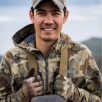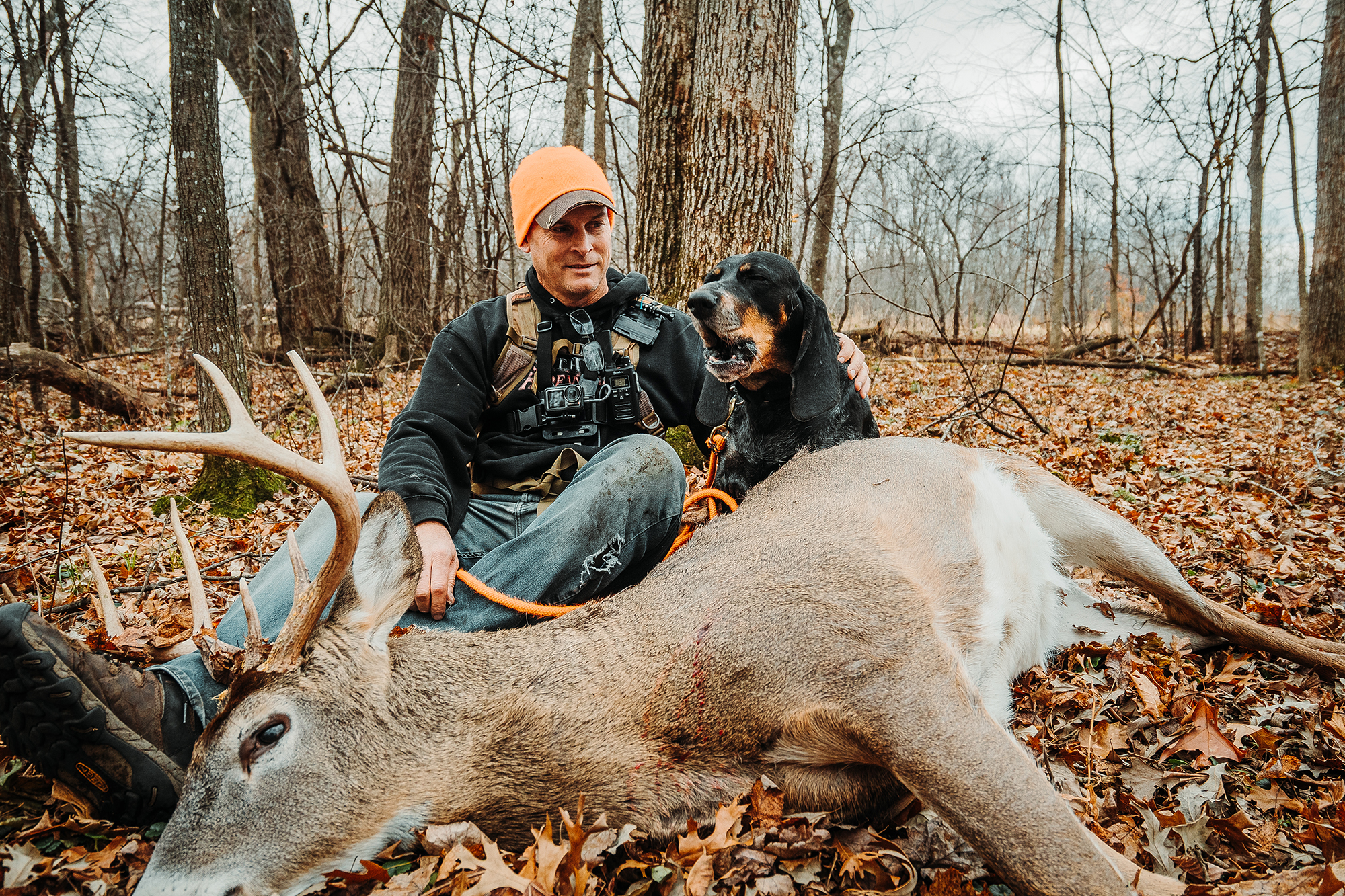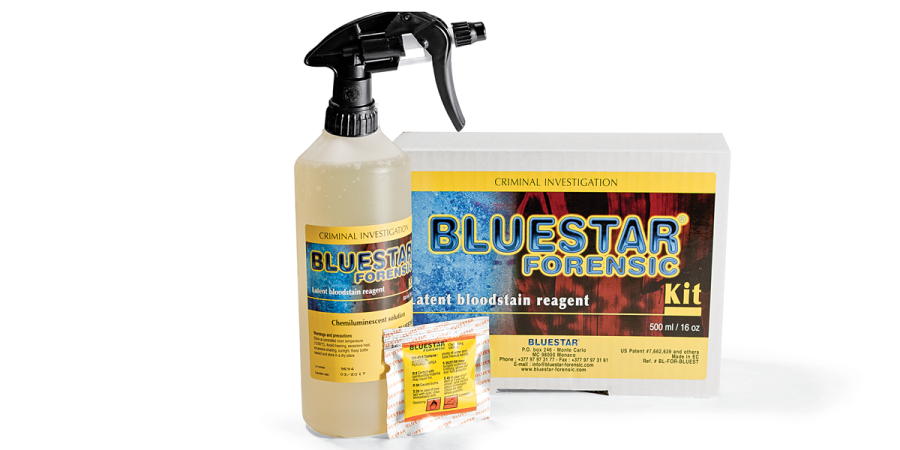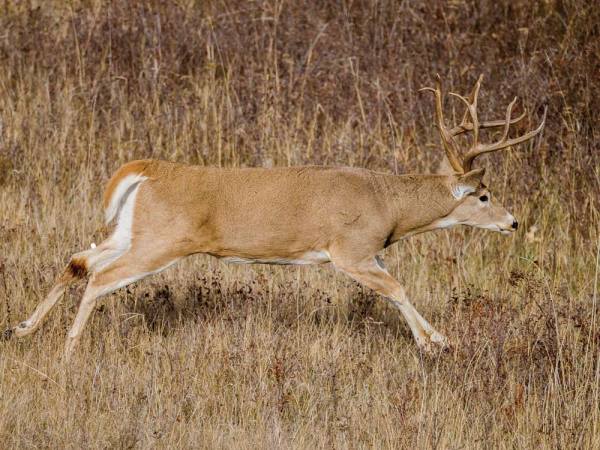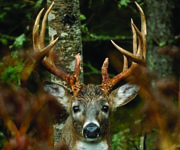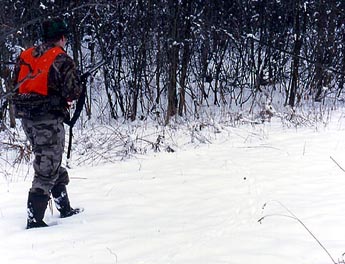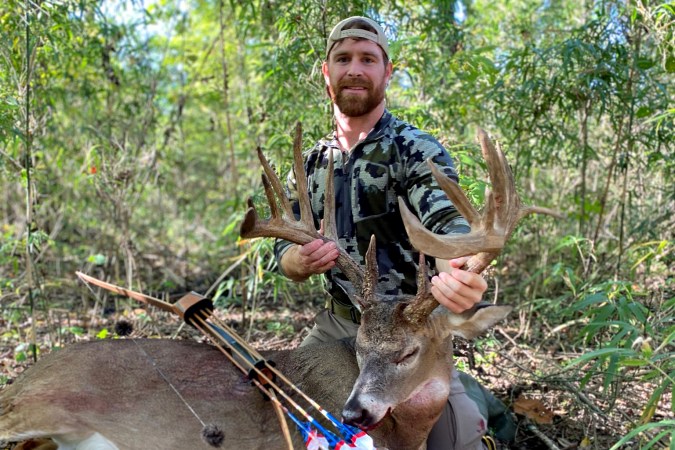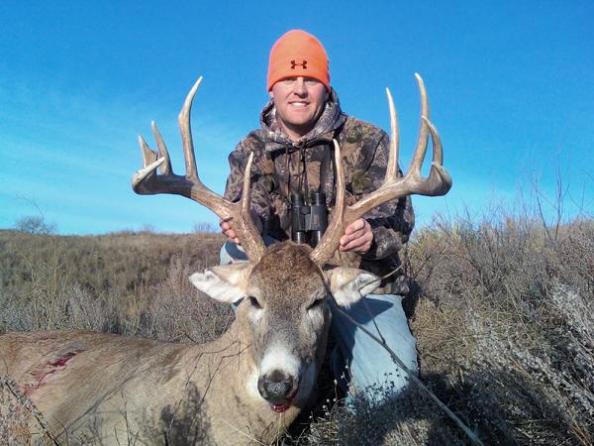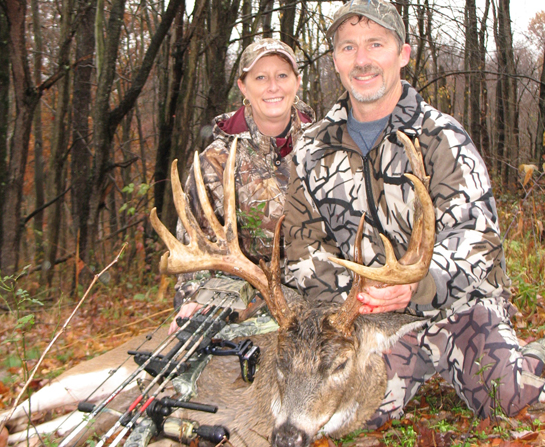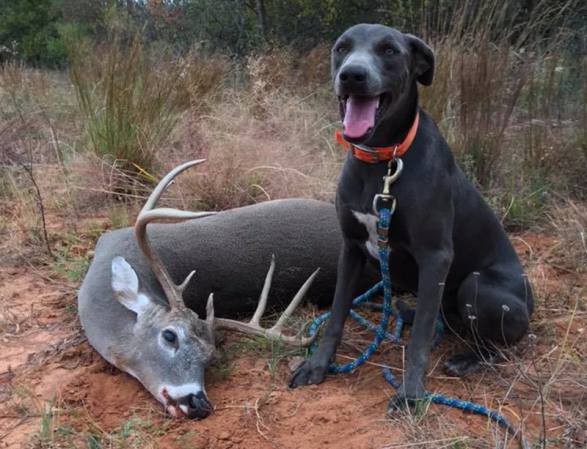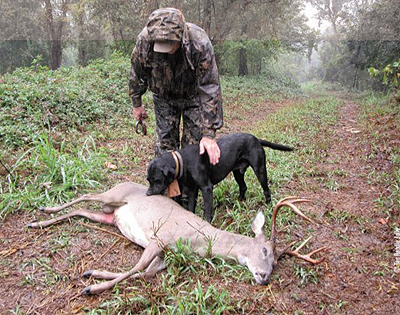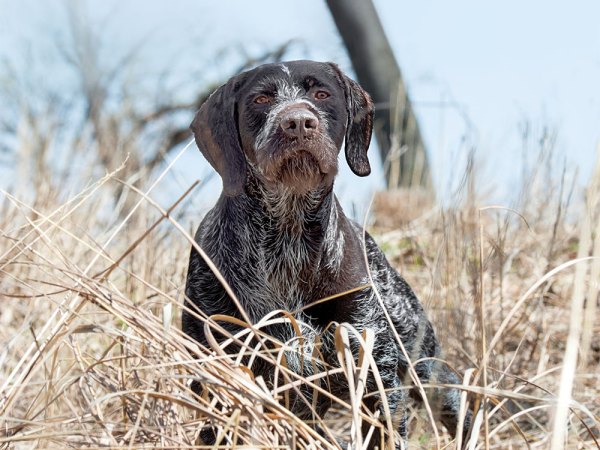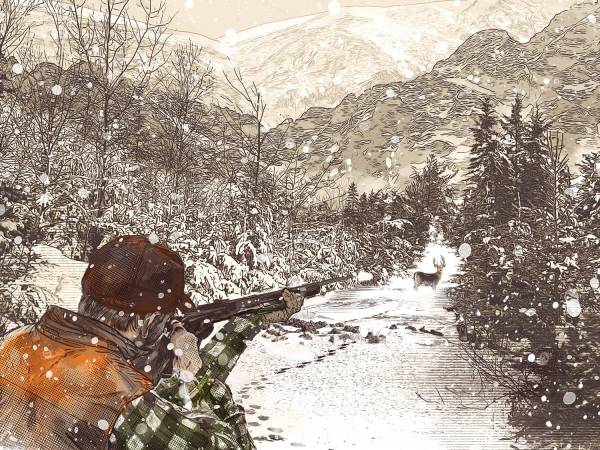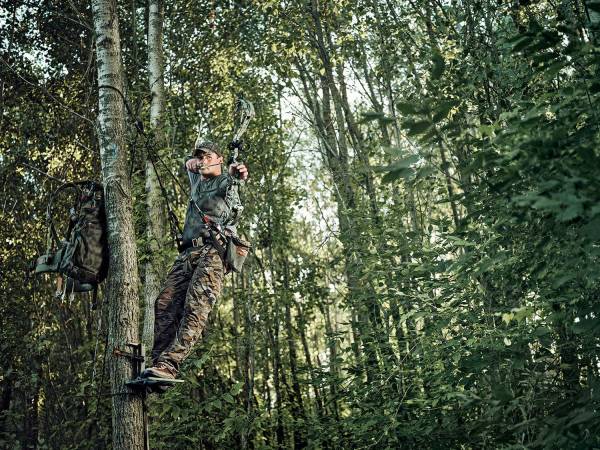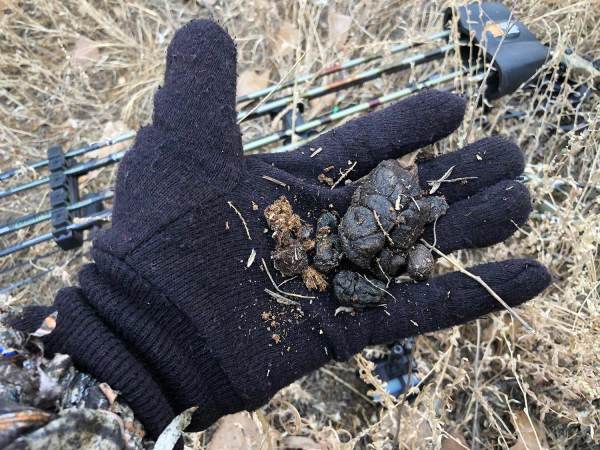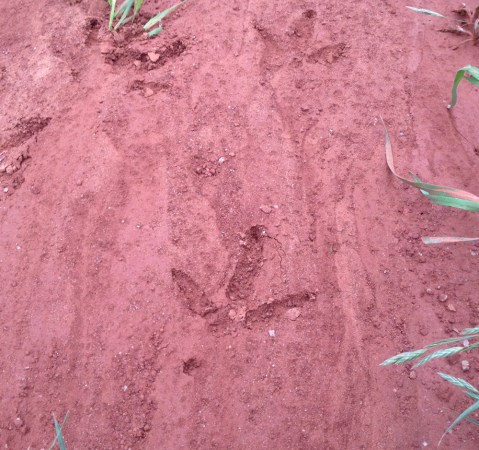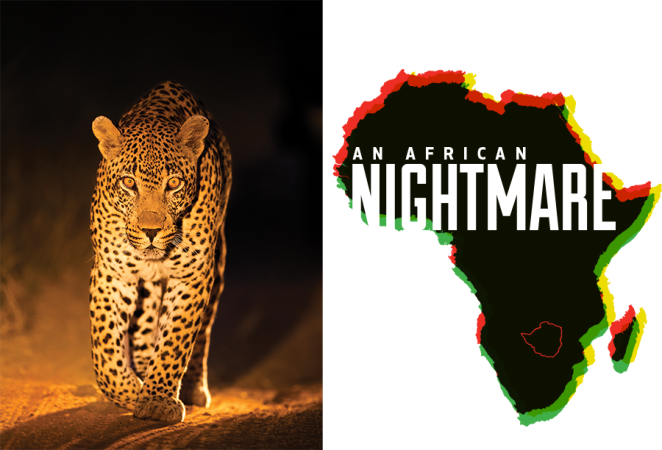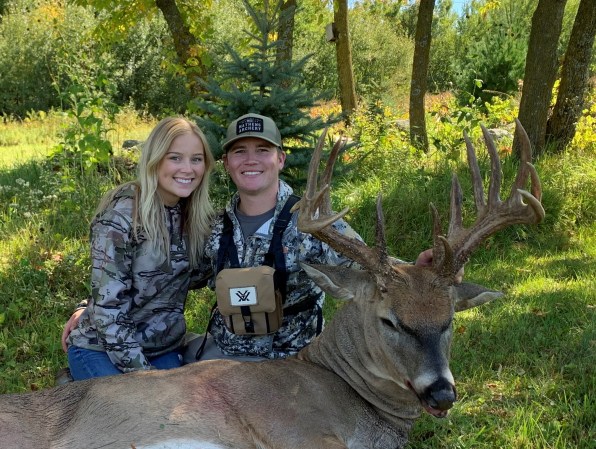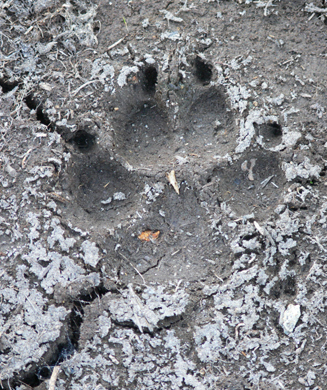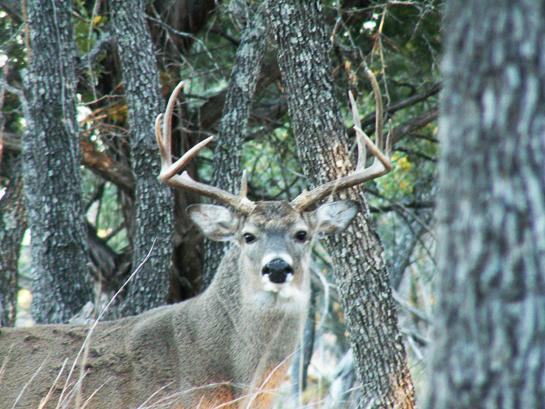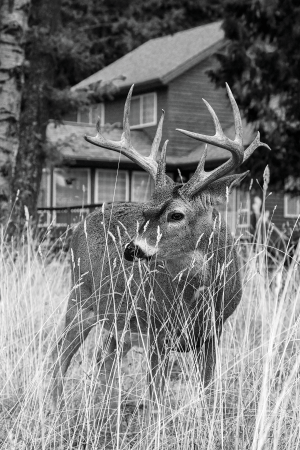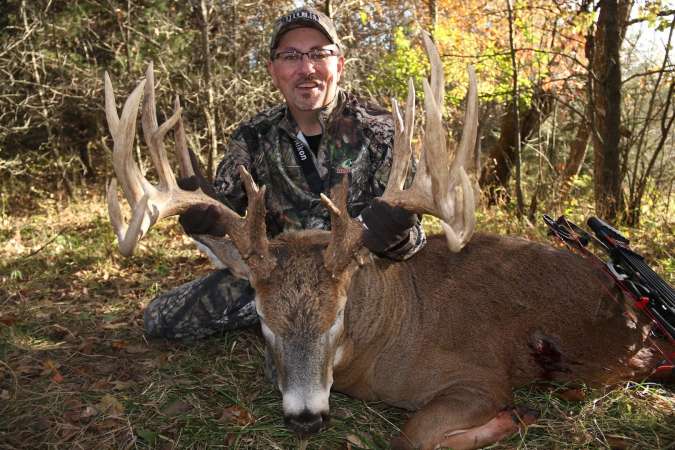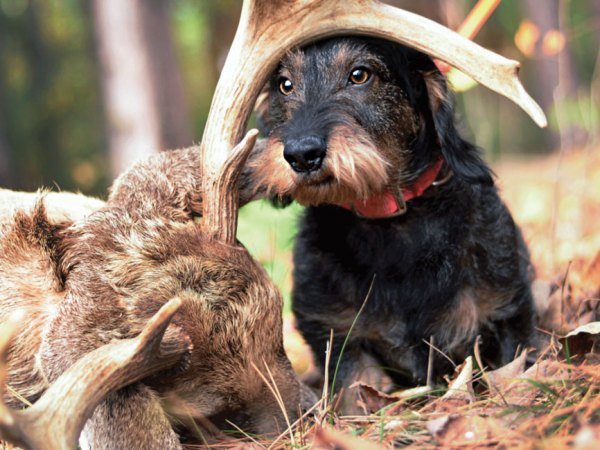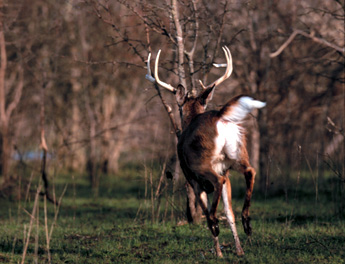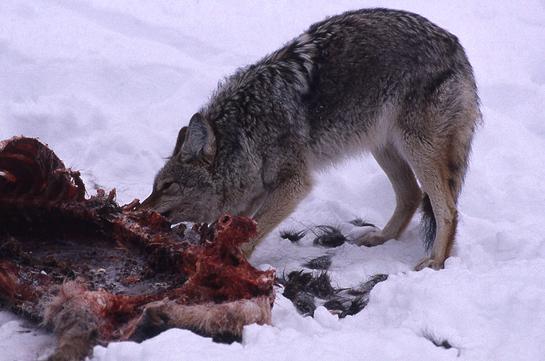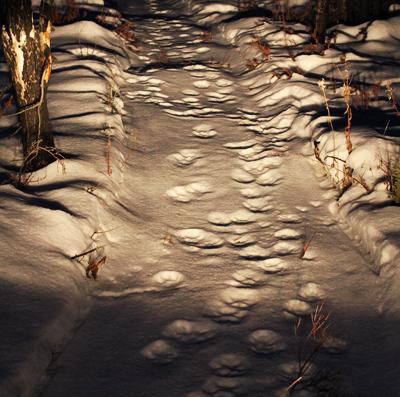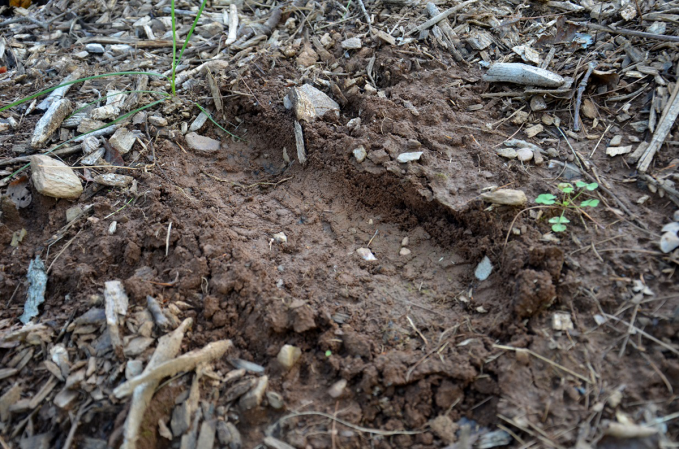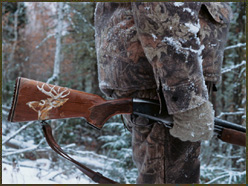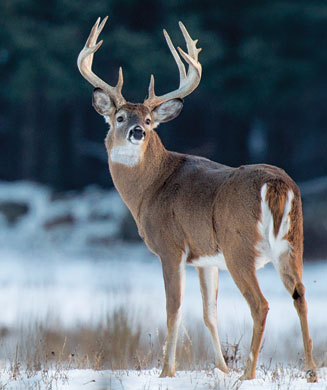Shane Simpson and his bluetick coonhound Callie are like the Spec Ops of the whitetail hunting world. When things go wrong, you’ve run out of good options, and you need help, they’re the ones you call. Simpson is a blood-tracking dog handler who help dozens of hunters find their marginally-hit deer each season. He and Callie will drive long miles, follow seemingly impossible tracks, and spend countless hours searching for deer because, well, it’s fun for them.
As a founding member of the Minnesota Tracking Dogs, Simpson works to offer services from other trackers all across the state. An even larger group, United Blood Trackers, does the same thing nationally. According to their site, all but seven states allow hunters to use tracking dogs to recover big game (California allows tracking with some exceptions). So, if you’re a whitetail hunter, there’s a good chance a volunteer tracker lives in or visits your area, and is ready to put their dog to work. These trackers can try to help you find a specific deer on any given track, and they’re learning fascinating things about blood trailing, deer behavior, and shot placement along the way.
Learning to Track
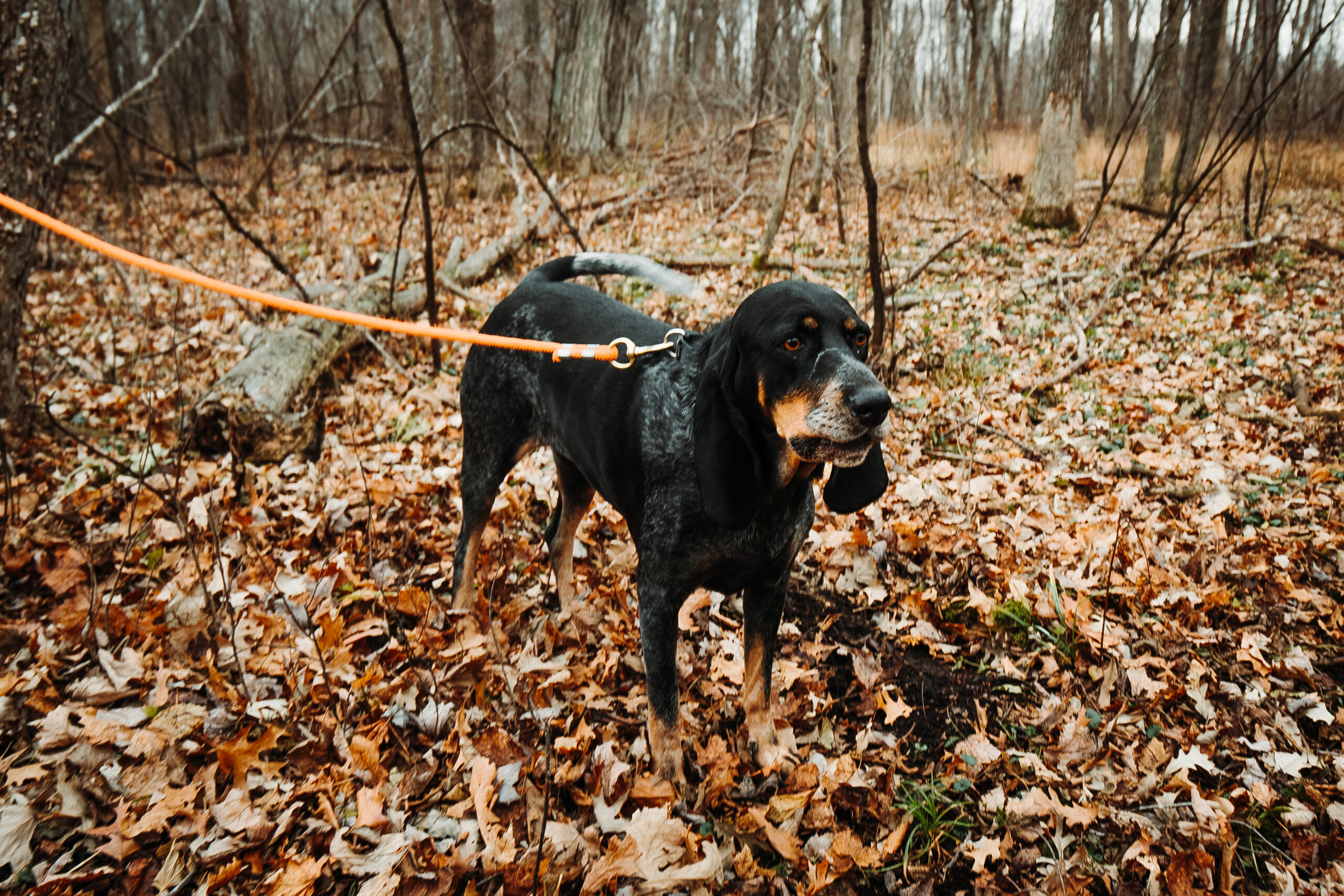
Simpson started training Callie as a puppy by hiding deer hooves around his house and having her track them down. As Callie developed, Simpson started making longer tracks in the yard, then he’d age the track (you can now watch all of their adventures on his Youtube playlist the “The Callie Chronicles.”)
Interestingly, tracking dogs aren’t sniffing out blood alone. Wounded and stressed deer give off different odors, which dogs can pick up on.
“That’s probably why a coyote can find a deer before you do,” Simpson says. “They’ve crossed how many deer trails going through the woods and then they cut that one and smell ‘aw, this one is injured’ and then they follow it right to your deer … Well, a tracking dog is doing the same thing. That’s how they’re able to stay on one particular deer when there’s a bunch of them out there.”
Before Simpson started taking Callie on tracks for the general public, he had her track two deer for a friend as a test run. Simpson’s buddy had killed two deer with his bow and didn’t expect either tracking job to be very difficult—he was wrong. The hunter had mixed up the directions the deer had run, one of the hits wasn’t nearly as good as he thought, they had to deal with coyotes, and they had to come back and pick up the trail the next day. Eventually, they found both deer but Simpson learned some valuable lessons that day—lessons that were reinforced season after season of tracking.
Pay Attention After the Shot
The seconds and minutes that follow your shot are critical. So instead of fist pumping or filming a selfie video, watch and listen carefully. When Simpson gets a call from hunters he asks: When did you shoot it? Where are you located? Where do you think you hit it? What type of broadhead (or cartridge) were you using? Were you using a lighted nock? (Hunters who use lighted nocks are far more accurate on where they think they hit than hunters who don’t use lighted nocks, Simpson says). Did you get a pass through? How long did you wait before tracking. Are there any property lines nearby? If there are, do you have permission to cross them?
The more accurately you’re able to answer all these questions, the easier it will be for a tracker to find your deer.
Don’t Track Too Soon
Another key is to make an honest assessment of your shot placement. Many hunters who hit deer “just a little back” assume they hit both the lungs and the liver, meaning a quick kill. In reality, these are of the gut/liver shots and hunters often take up the track too soon, bumping the deer out of its first bed, which greatly decreases the chances of recovering the deer.
“A lot of people think that liver hits kill pretty quickly, and it does in some cases,” Simpson says. “But I’ve tracked deer that were alive after 16 hours after they were hit, and it was a liver shot.”
Simpson has the data to prove this. He cuts open and analyzes every deer he recovers and takes photos of shot placement.
“People think the lungs go back farther back than what they do,” he says. “You don’t have to go too far behind the shoulder to hit guts.”
Mark the Blood Trail with Tissue
Simpson loves it when hunters mark their blood trails with little pieces of tissue paper.
“It helps the tracker so we can start at the hit site,” he says. “When we’re tracking, we go pretty fast at times. And I can see tissue go by as we’re tracking and I’ll know that she’s on it. It gives us confirmation so that we don’t have to second guess.”
Using a GPS waypoint to mark the blood trail works okay, but not as well as tissue paper. GPS can’t put you exactly on the blood trail, and being even a few feet off is unhelpful. (Plus, tissue paper is biodegradable, so you don’t have to worry about going back and picking it up later.) Then, mark the spot of last blood with something highly visible—not a camouflage hat or gloves.
Also, try to avoid walking directly on the blood trail. This makes it much more difficult for the dog to pick up your deer’s track (more on this later in the “grid search” section).
Don’t Overestimate the Blood Trail
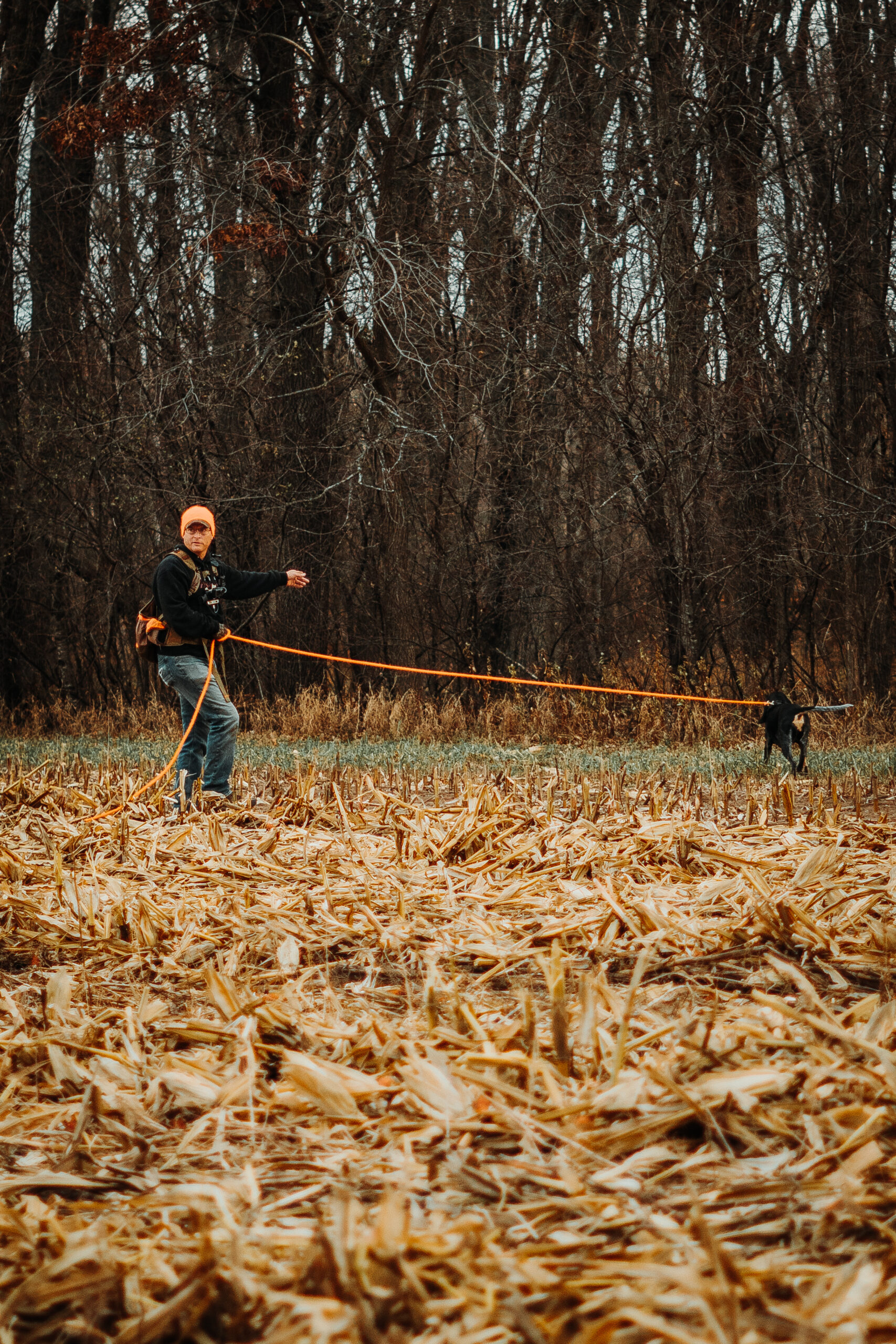
There’s a tendency for hunters to be overly optimistic about the amount of blood on the ground and the type of blood on the ground, Simpson says.
“A hunter will call and say ‘I got lots of blood, and then it just stopped’ but then we get there you can see it’s really only a few drops,” Simpson says. For context, Simpson says to think about if you cut your finger and it’s bleeding. That could leave a good amount of blood splashed about your yard or kitchen, but it’s a far from “lots of blood” that could lead to a fatal injury.
Likewise, don’t get excited to see bright red blood.
“Bright red blood doesn’t always mean a lung shot,” Simpson says. “Bright red blood could be muscle. Blood coming from the lungs is highly oxygenated, it’s bright red and when it goes out to the different muscles in the body, it’s still bright red … You could hit a deer in the leg and the blood will be bright red. Blood to me is just blood. Now, an exception is if you get darker blood that has that kind of purple hue or essence to it, that a lot of times means liver.”
A “Grid Search” Is the Last Resort
“If the thought comes to your mind, yeah, let’s call up some buddies and grid search, call a tracker first,” Simpson says. “Your odds of recovery go way down for a tracking dog if you’ve grid searched first.”
On tracks that are not grid searched, Simpson has more than a 60 percent success rate of recovering the deer (this even better than it seems, considering many deer Simpson is called out to track haven’t been mortally hit). On tracks where there’s been a grid search first, Simpson and Callie have about a 10 percent recovery rate.
With a grid search, you and your buddies are picking up scent molecules and blood droplets from the deer and spreading them all over the woods. If you fail to find the deer and then call in a dog, the blood tracker has to work through a crisscrossing maze of scent.
Watch: Simpson Recovers a Buck In Wisconsin
“An analogy we like to use is to imagine a playground with fresh snow on it, and there’s just one set of tracks going through it,” Simpson says. “And now imagine a bus full of kids got dropped off and played in the playground for six hours. That first scene is what a track looks like to a dog when an area has not been grid searched. The second one is what a grid-searched area is like for a dog.”
Beware of the Old Wounded-Deer Myths
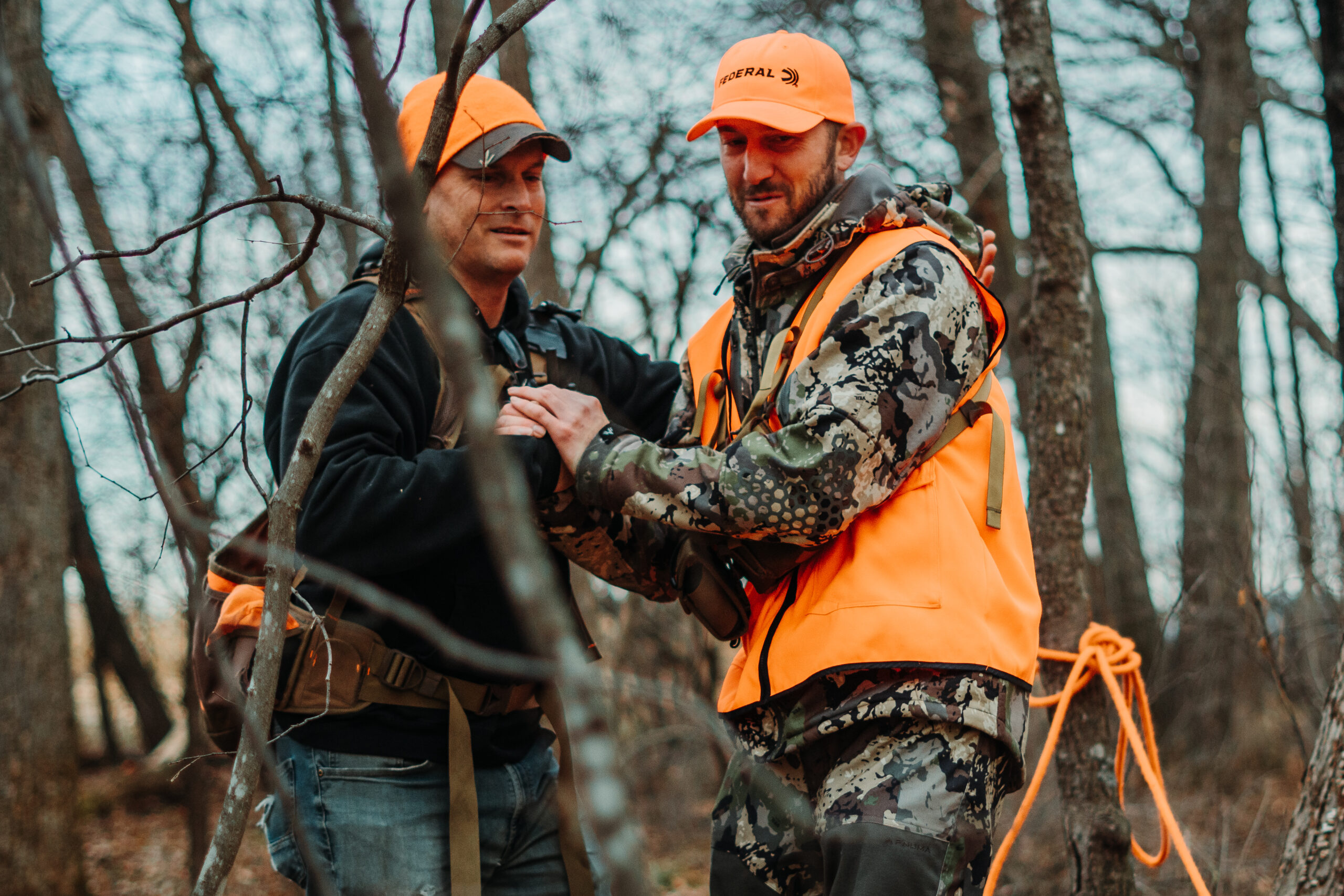
Two of the biggest myths in blood trailing are that wounded deer always run downhill and that they head for water. These beliefs are simply untrue. Callie has found only about one percent of deer near water. As for running downhill?
“A hit deer will whichever direction it wants,” Simpson says.
After the shot, deer typically run in a fairly straight line, according to Simpson. They might charge through brush at first, but then they’ll get on a deer trail and keep going in a given direction (whether that’s uphill or downhill). This only changes for deer that are not hit well.
“A deer only goes somewhere intentionally when it has a chance to think about it,” Simpson says.
Deer that live longer typically seek out a spot in cover where they can watch their back trail. Besides that, there are no hard-and-fast rules for what a wounded deer will do.
Tracking Dogs Are Low Profile
Despite their growing popularity, there are still some general misconceptions about blood tracking dogs, Simpson says. Many hunters and landowners think that a tracking dog handler comes in and cuts loose a pack of hounds that run free through the woods, barking and bawling as they go. This is not the case. Tracking dogs are kept on a long lead which the handler holds. They’re usually quiet. And the disturbance of one handler and a dog is much less than, say, a handful of buddies grid searching with spotlights, yelling to each other all the while.
“Just me and a dog, I’m in and out of there,” Simpson says. “I’m straight to your deer. Here’s the deer, and the hunter drags it out.”
